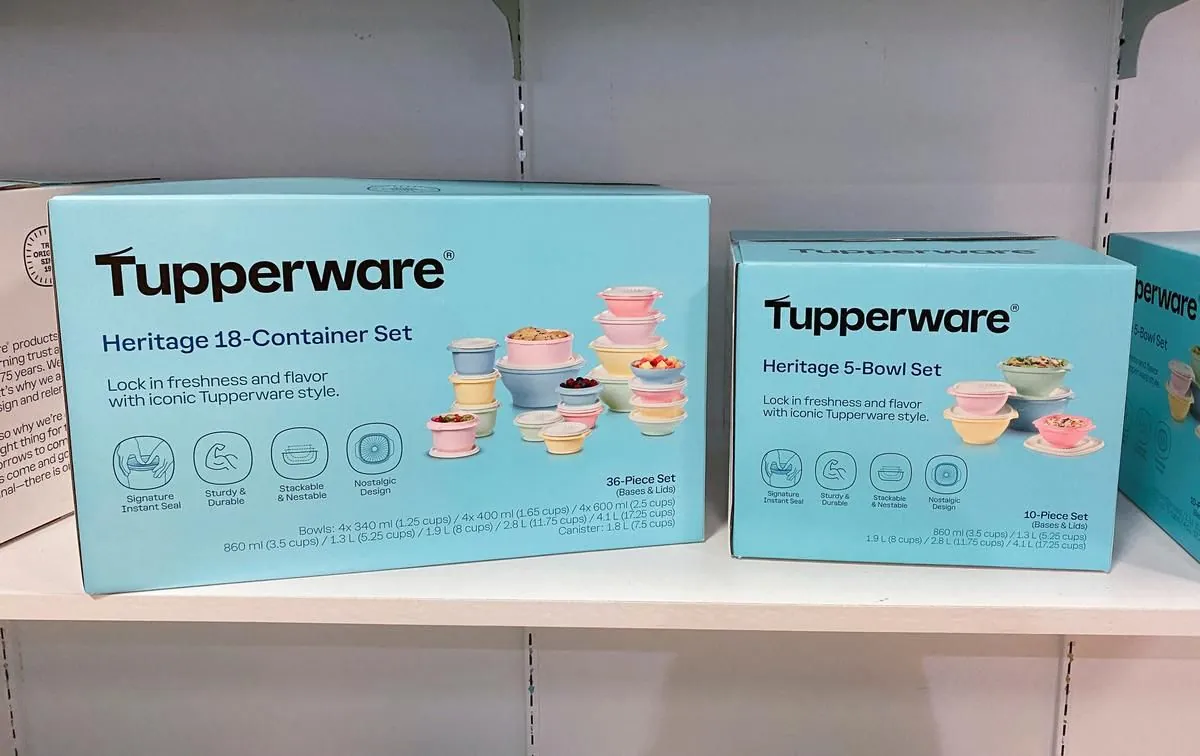Tupperware's Bankruptcy Plans Challenged by Key Lenders
Tupperware's bankruptcy filing faces opposition from major lenders, who cut off cash access and push for liquidation. The iconic brand struggles with $818 million debt and declining sales.

Tupperware Brands Corp, the iconic food storage container manufacturer, has encountered significant obstacles in its bankruptcy proceedings. The company, founded in 1946 by Earl Tupper, filed for bankruptcy protection on September 18, 2024, with a substantial $818 million in debt. However, its plans for a swift auction process have been met with strong opposition from key lenders.
Three major creditors, including Alden Global Capital, Stonehill Institutional Partners, and a trading desk of Bank of America, have taken unprecedented steps to challenge Tupperware's bankruptcy strategy. These lenders, who acquired Tupperware debt with a face value of $450 million in July 2024, have restricted the company's access to $7.4 million in its bank accounts and filed a motion to either dismiss the bankruptcy or convert it to a Chapter 7 liquidation.
The lenders' attorney, Allan Brilliant of Dechert, argued that Tupperware's proposed 30-day auction process would merely prolong an unsuccessful search for a buyer. According to court filings, despite spending $67 million on restructuring and marketing efforts since January 2023, the highest bid received was only 20% of the company's existing debt.

Tupperware, represented by attorney Spencer Winters of Kirkland & Ellis, contends that an open and transparent sale process under court supervision is necessary. Winters highlighted that the objecting lenders had recently acquired their controlling stake for a fraction of the bids they now deem unrealistic, estimated between $15 million and $30 million.
The company's financial troubles stem from a prolonged decline in sales, attributed to an overreliance on independent sales representatives rather than embracing online and retail store channels. This struggle reflects the challenges faced by Tupperware in adapting to changing consumer habits and competition from cheaper alternatives.
Tupperware's history is marked by innovation and cultural impact. The brand's iconic "burping seal" was invented in 1947, and its products have been featured in the Museum of Modern Art in New York. The company introduced the concept of Tupperware parties in the 1950s, revolutionizing direct selling methods. However, this sales model has faced criticism in recent years for potentially exploiting women in developing countries.
Despite its current financial woes, Tupperware has maintained a global presence, with products sold in nearly 100 countries. The company has also diversified its product line beyond food storage to include cookware and beauty products under various brand names.
As Tupperware navigates this critical juncture, it plans to request that U.S. Bankruptcy Judge Brendan Shannon restore its access to cash accounts at an upcoming court hearing. The outcome of this case, filed as In Re Tupperware Brands Corp in the U.S. Bankruptcy Court for the District of Delaware, will determine the fate of this once-ubiquitous American household brand.
"They hope to convince Your Honor that they could sell to some third party rather than the lenders, but the reality is that that's just not going to happen here."
The resolution of Tupperware's bankruptcy case will not only impact the company's future but also serve as a reflection of the changing landscape of consumer goods and retail strategies in the modern era.


































